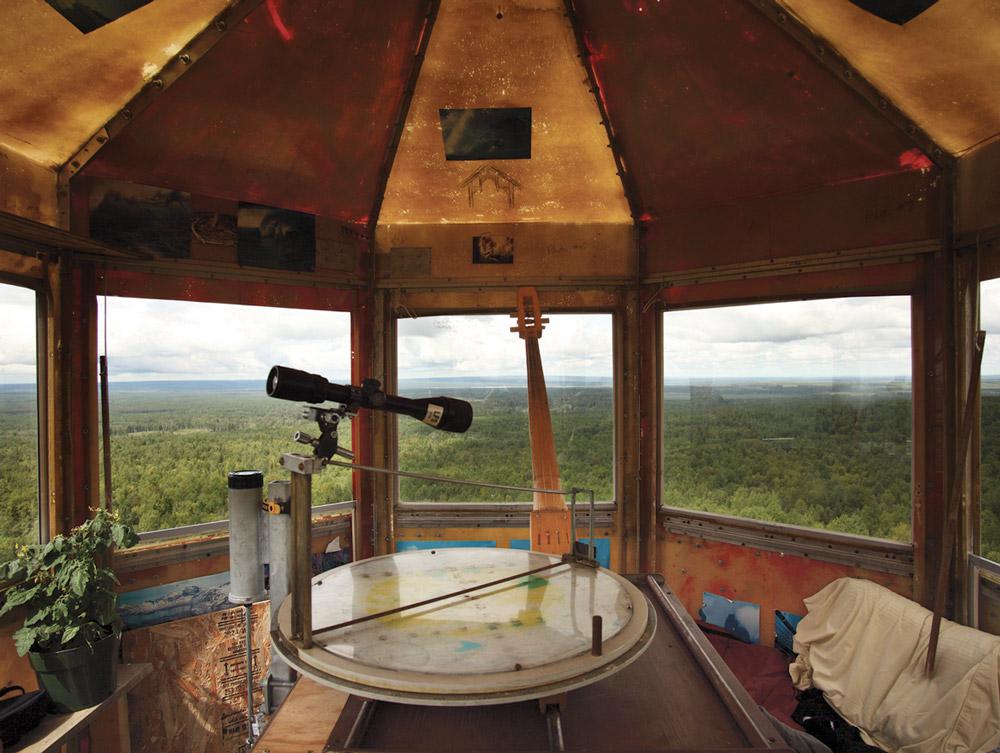This year’s extensive edition of the Alberta Biennial of Contemporary Art was curated by the province’s senior critic: award-winning arts journalist and independent curator Nancy Tousley. With 36 artists, the biennial was a carefully constructed snapshot of contemporary works from across the province made within the last three years. The exhibition was expansive, taking over the museum’s main entrance hall, three major galleries and third-floor terrace.
Titled “The News From Here,” the biennial took as its starting point post-regionalism, making the case that artists in Alberta are shifting traditionally imposed narratives of regionalism through an active consideration of place. According to Tousley, while artists in Alberta participate in an international community, their art attends to the specifics of where they live and work. Place plays a significant role in the formation of their practice and is actively engaged in its construction.
A work that drew beautifully on the physical specifics of place was Jason de Haan and Miruna Dragan’s The Wood and Wave Each Other Know (2011). Providing a 360-degree panorama of Northern Albertan treetops from an eight-by-eight-foot wildfire-lookout cabin, this video includes glimpses of the self-taught musician Daniel Bosch playing his custom-made body-less cello, turning the lookout into a chamber for broadcasting his improvised music into the sublime.
Similarly breathtaking was Noel Bégin’s installation of 22 slide projectors whose photographs made up a large mural that visitors walked through, casting shadows that revealed its varying narrative layers. With references to the Rococo and an appropriation of everyday Calgary, the piece parallels First World excess and the Arab Spring with royal extravagance and 18th-century revolutionism.
Remarkable works connoting natural forces and alternate universes included those by Robyn Moody and Pamela Norrish. Moody’s Wave Interference (2012), a rhythmic fluorescent wave of lights that moves to the melancholic soundtrack of an accompanying organ, makes visible the awe-inspiring nature of electromagnetic waves. Equally compelling was Norrish’s Outfit for the Afterlife (2013), an impeccably beaded T-shirt and pair of jeans fit for the artist that evoke the ceremonial in the here and now while also musing on an ethereal transcendence.
By presenting a diverse cross section of practices, the exhibition revealed encounters between emerging artists and their more established counterparts. It was a space where Eric Cameron’s hypnotic installation of Remembrance Day poppies dipped in latex paint was positioned a turn away from haunting etchings exploring containment, memory and loss by the younger artist Jewel Shaw. Overall, the exhibition was rich with exciting work, and was further bolstered by a compelling film program that included Trevor Anderson’s award-winning piece The Man That Got Away (2012).
While each work explored the specific, the biennial was an eloquent and moving model for the poetics of place, and a showcase for artists who play an integral role in its construction.
This is a review from the Summer 2013 issue of Canadian Art. To read more from this issue, please visit its table of contents.









